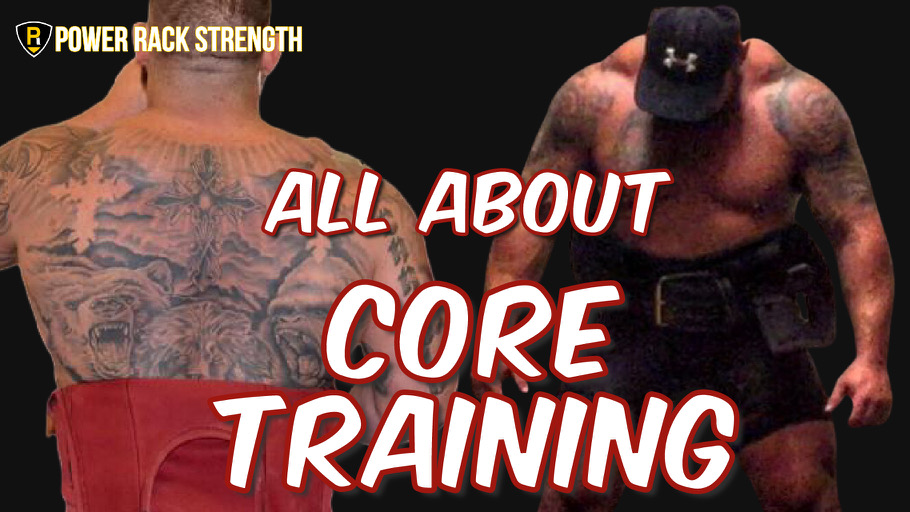
09 Aug Core training: How often and how much?
Core training: How often and how much?
Core training can be very controversial due to the polarizing opinions on the matter. Which exercises, how much, how often? I don’t think it should be so complicated, but it is. Depending on who you ask, you will get very different answers. This article will discuss core work for the strength athlete, what I did for the core, and what I suggest for others. Again, how often, what exercises, and why: everything matters, and the demands of the sport or goal must be focused on. So let’s get into the nuts and bolts.
Core training for the strength athlete
By now, you know I’m not a big fan of the trunk’s repetitive bending, twisting, and extending exercises for the strength athlete. Exercises like reverse hypers, cable crunches, leg raise, and Russian twists can present problems. Since we don’t use these motions in competition, I don’t see much benefit from doing them. Think about it: we stay rigid and locked in during the squat and deadlift. Why train otherwise? These exercises and strategies can be beneficial in bodybuilding and many cases, for other athletes to isolate muscles. Still, for strength sports, there isn’t going to be much carryover in my experience. Unfortunately, these exercises can exacerbate a bad back and further delaminate the annulus (outer layer of collagen in the disc). While this damage isn’t likely to happen overnight, it can become cumulative and was a big part of my back issues that I had to face ten years ago. I suggest using better strategies, those which I’m going to cover.
Core training I suggest
Core training for the strength athlete should be only diverse enough to fit the demands of the sport. Most of what we will be doing is static and holding into position. I suggest variations of planks, The Mcgill Big 3, carries, sled drags, and exercises like Stir the pot. Also, variations of good mornings. These exercises teach you to lock in your trunk and use proximal stiffness to unleash distal athleticism. Once these exercises become easy, there are plenty of ways to advance them and dramatically increase the difficulty level. For instance, starting with suitcase carries, then progressing to a bottom-up version. Once exercises are switched to isometric and static like these, I see that almost weekly, cores become stiffer, back pain goes away, and lifts go up!
How often to train the core?
This one is going to depend, just like everything else. But, for starters, I will tell you what I do daily. I walk every day, starting at 6 am with my first client. Walking is highly undervalued for the core (nature’s back balm). I do the McGill big three daily, but that’s the only core work I do daily. For those looking for guidance on how often to train the core with the ‘harder’ exercises like carries, sled work, stirring the pot, etc., this will depend, but I would not do them daily. When I was training for competitions, I would do them about 3x per week, which suited me just fine. Some athletes could need more but start with the least effective dose, then progress as needed.
Core work doesn’t have to be complicated, but it should have a purpose. Keep in mind injury history. Different athletes will require different exercises and approaches. But as strength athletes, it’s pretty straightforward. Books I suggest for more ideas about core training: Ultimate Back Fitness and Performance, Gift of Injury, and 10/20/Life.
Brian Carroll
Latest posts by Brian Carroll (see all)
- Quick Rant: Core Exercises - July 26, 2024
- Physical Therapy Fails for Back Pain - July 25, 2024
- Quick Rant: Physical Therapists - July 19, 2024





Sorry, the comment form is closed at this time.